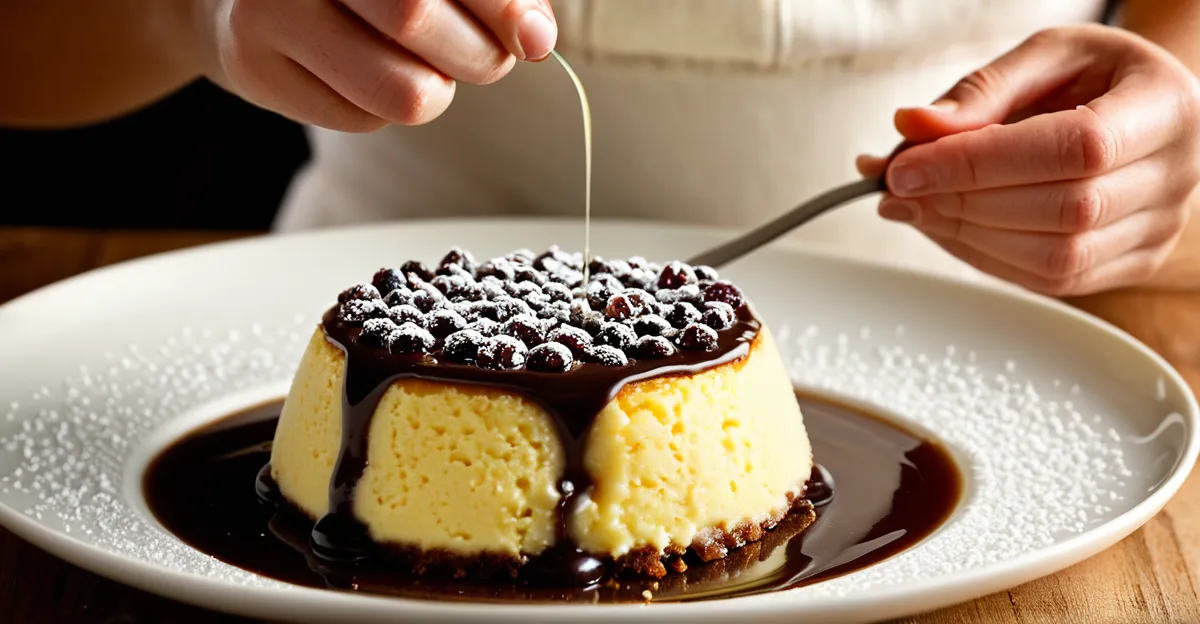Ingredients and Equipment Checklist
Before diving into making spotted dick, gathering the right spotted dick ingredients and required equipment is crucial for a smooth cooking experience. The core ingredients typically include:
- 225g self-raising flour
- 100g suet (or vegetarian suet as an alternative)
- 100g currants or raisins (these are the “spots” in the pudding)
- 100g sugar
- 1 large egg
- Approximately 150ml milk
- A pinch of salt
Selecting high-quality currants or raisins enhances the dessert’s flavor and texture. Fresh suet, whether traditional or vegetarian, ensures the correct dough consistency.
Topic to read : How do Traditional British Dishes Influence Modern Culinary Techniques?
Regarding kitchen tools, you will need:
- A large mixing bowl for combining the ingredients thoroughly
- A measuring jug for liquids
- A wooden spoon or spatula
- A pudding basin for steaming the dessert
- Greaseproof paper and aluminum foil to cover the basin securely
- A large pot or steamer suitable for steaming
Quality tools impact the preparation; for example, a well-sealed pudding basin prevents water ingress during cooking, which could otherwise ruin the dessert’s texture. Having the right equipment on hand minimizes disruptions and helps achieve classic results with authentic British charm.
Also to read : How can you elevate a traditional black pudding dish with contemporary flavors?
Preparing the Spotted Dick Mixture
When starting your spotted dick preparation, it’s essential to follow precise mixing steps to achieve the dessert’s classic texture and flavor. After assembling your spotted dick ingredients, begin by thoroughly combining the dry components—self-raising flour, suet, sugar, and currants or raisins—in a large mixing bowl. This ensures an even distribution of the “spots” throughout the mixture, preventing fruit from clumping at the bottom or top.
Next, lightly beat the egg and gradually add it along with the milk to the dry mix. Stirring steadily with a wooden spoon or spatula helps develop the correct dough consistency—soft yet firm enough to hold shape during steaming. If the mixture feels too dry, add a little more milk sparingly; if overly wet, a small additional amount of flour can aid firmness. Achieving this balance is crucial for the pudding to rise properly and retain moisture.
Carefully folding the dried fruit into the dough during mixing ensures that each serving features the signature “spots” evenly dispersed, a mark of expert spotted dick preparation. Take care not to overmix, as this can make the pudding dense instead of light and airy. The goal is a homogenous batter that retains enough air to puff up nicely in the pudding basin.
This traditional dessert method relies on attention to detail in these early stages, setting the foundation for a well-textured and flavorful pudding, embodying authentic British comfort food at its best.
Cooking and Steaming Techniques
Mastering how to steam spotted dick is essential for authentic texture and flavor. Traditionally, the pudding is placed in a well-greased pudding basin, covered tightly with greaseproof paper and aluminum foil, then set into a large pot with boiling water reaching halfway up the basin’s side. This indirect heat cooks the dessert gently over about 1.5 to 2 hours. Maintaining a steady simmer, not a rolling boil, prevents water from entering the basin, which could make the pudding soggy.
To check doneness, insert a skewer or thin knife into the pudding; it should emerge clean without uncooked batter sticking. Avoid lifting the lid or removing foil frequently during steaming, as this releases heat and steam, prolonging cooking time and risking uneven cooking.
Alternative cooking methods include baking the spotted dick in an oven-safe dish covered with foil at around 160°C (320°F) for about 1.5 hours. Microwaving is less traditional but can save time: use a microwave-safe dish, cover loosely, and cook on medium power in short intervals, checking texture frequently to prevent overcooking.
Key dessert preparation tips emphasize gentle heat and thorough sealing of the basin or cooking dish to retain moisture and allow the pudding to rise fully. This careful approach yields a moist, tender dessert with evenly cooked spots of dried fruit throughout.
Serving Suggestions and Finishing Touches
When serving spotted dick, presenting the pudding at its best enhances the enjoyment of this classic dessert. Traditionally, spotted dick is served hot, right out of the pudding basin, to showcase its soft, moist texture. Warmth helps highlight the blend of sponge and dried fruit, making each “spot” visually appealing and flavorful.
Popular accompaniments to complement the dessert include classic British custard, rich cream, or even a simple dusting of powdered sugar. Custard, poured generously over the pudding, accentuates the suet’s richness and balances the sweetness. For a lighter finish, a spoonful of clotted cream or whipped cream provides a smooth contrast to the pudding’s dense texture. Some prefer a drizzle of golden syrup or a dollop of jam for an extra touch of indulgence.
Presentation tips are equally important. Carefully unmoulding the pudding onto a warmed plate helps maintain its form and temperature. Using a sharp knife, slice the spotted dick into even portions to reveal the evenly dispersed currants or raisins inside, which are the hallmark “spots.” Serving with a sauce on the side rather than poured directly allows guests to choose their preferred amount.
By considering these serving spotted dick strategies, you ensure that the dessert is not only delicious but also visually inviting, reinforcing its status as beloved British comfort food.
Tips, Variations, and Troubleshooting
Mastering spotted dick tips can elevate your cooking experience and help avoid common pitfalls. For those with dietary restrictions, suet can be substituted with vegetarian or vegan alternatives without compromising the signature crumbly texture. Similarly, using gluten-free self-raising flour allows preparation of this classic dessert for gluten-sensitive individuals. These variations keep the essence of the pudding while accommodating diverse needs.
Creative spotted dick variations include incorporating orange zest or mixed dried fruits instead of just currants or raisins. Adding a teaspoon of cinnamon or nutmeg introduces warmth and complexity to the flavor profile. Some cooks also experiment with treacle or golden syrup folded into the mixture to add subtle sweetness and moistness.
When troubleshooting, a common issue is a soggy pudding, often caused by water entering the basin during steaming. Ensuring the pudding basin is well-greased and securely covered with both greaseproof paper and foil helps prevent this. If the dough turns out too dense, it might indicate overmixing or too little liquid; adjusting milk quantity or mixing gently can rectify this. For uneven rising, check that the water simmers steadily—too vigorous a boil disrupts cooking and texture.
By applying these spotted dick tips, variations, and troubleshooting techniques, you can tailor the recipe to your preference while achieving that perfect, traditional English pudding texture every time.







